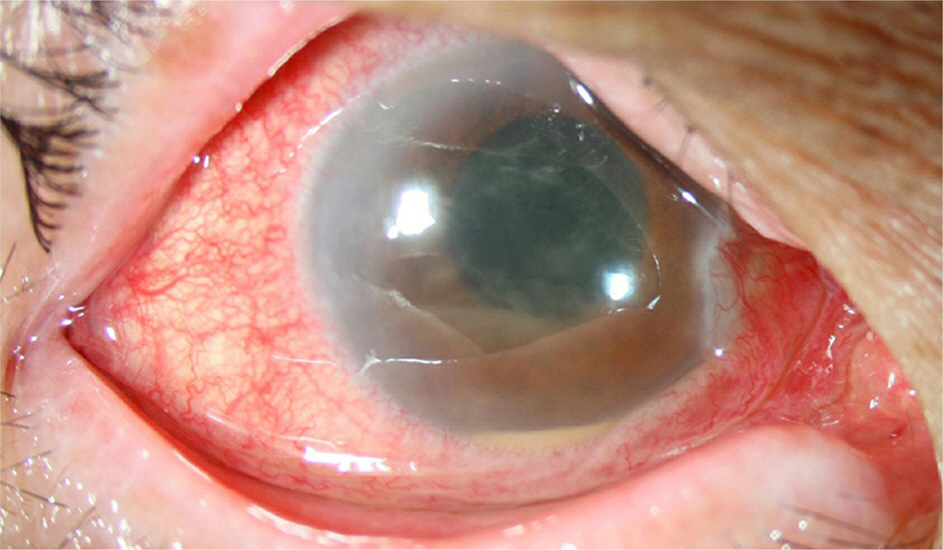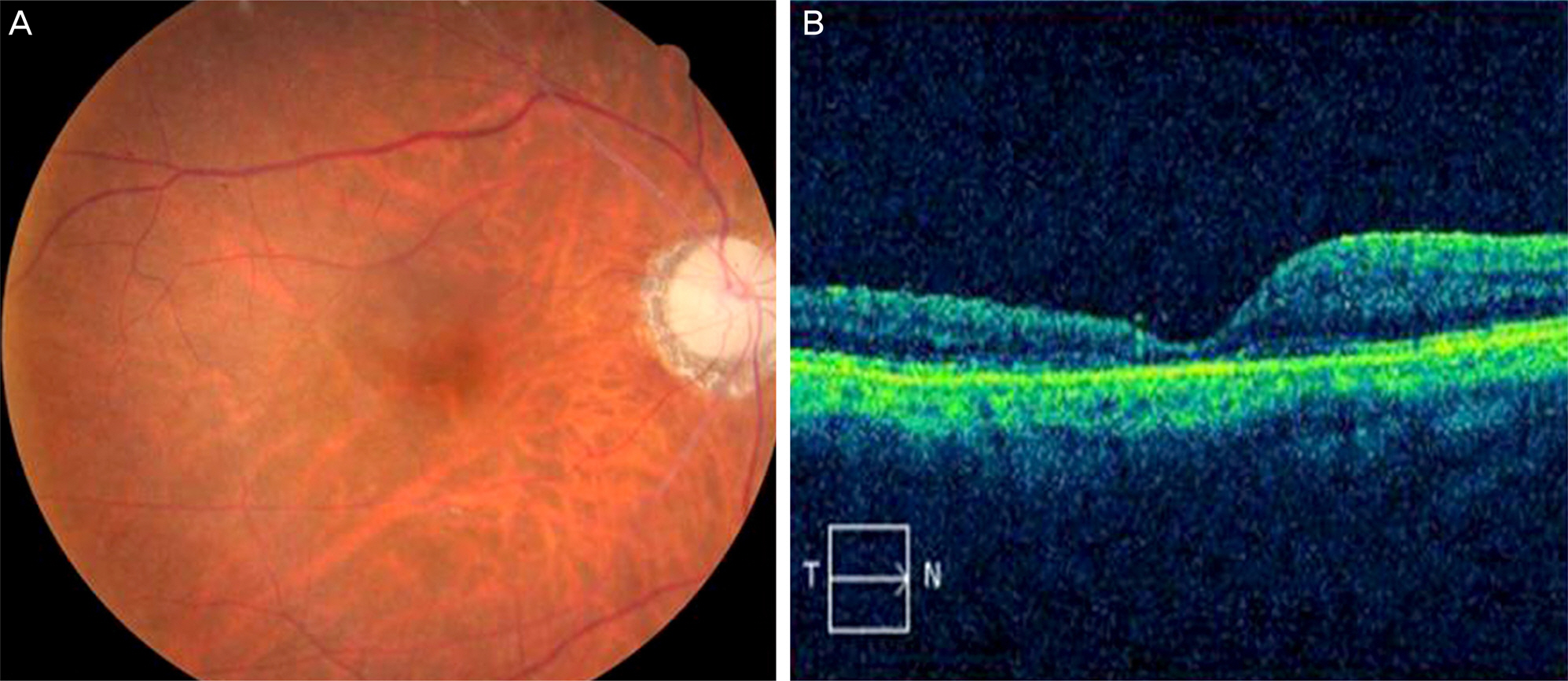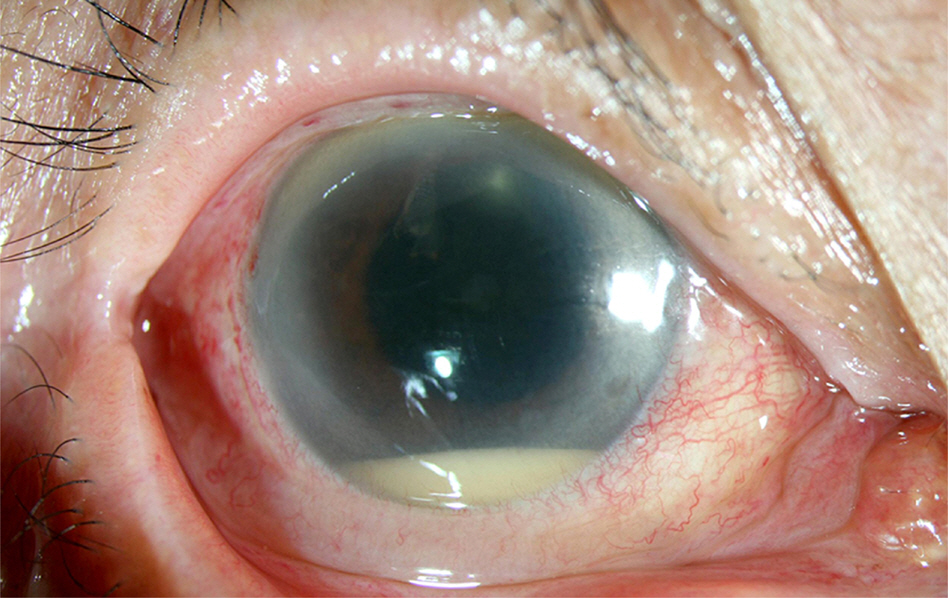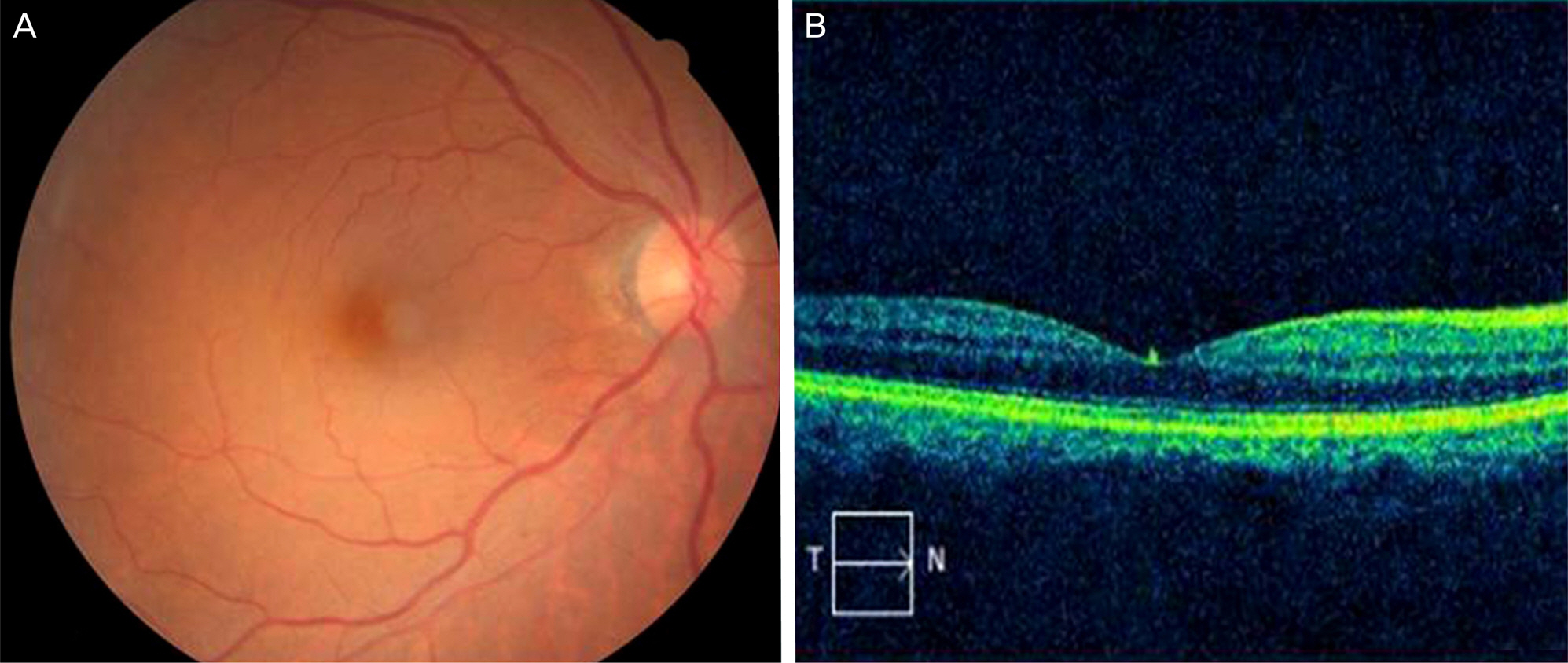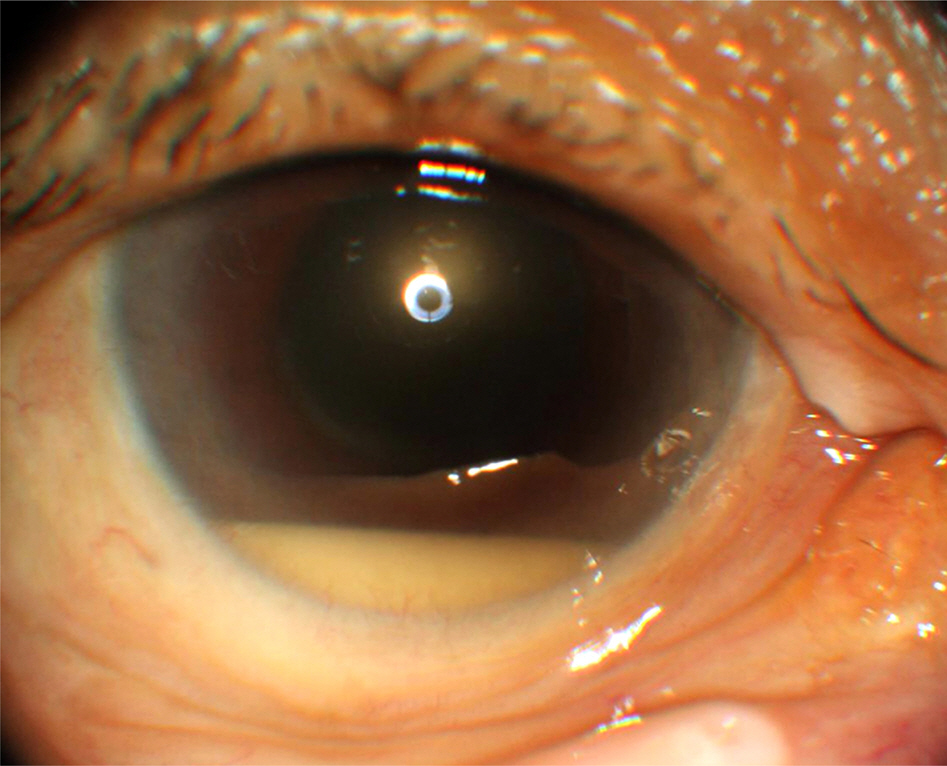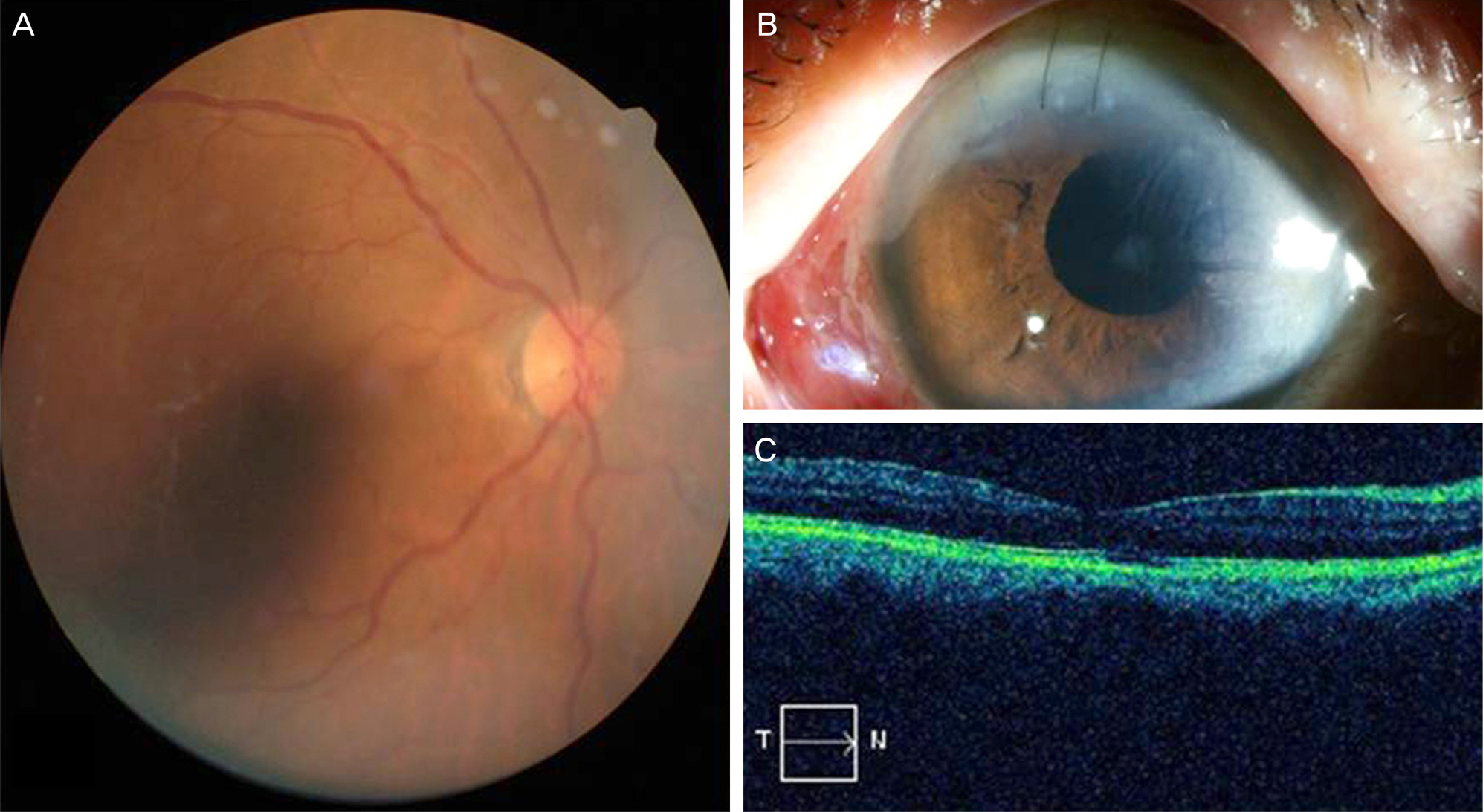J Korean Ophthalmol Soc.
2015 Apr;56(4):632-637. 10.3341/jkos.2015.56.4.632.
Two Cases of Recurrent Enterococcus Faecalis Endophthalmitis after Cataract Surgery
- Affiliations
-
- 1Department of Ophthalmology, Pusan National University Hospital, Pusan National University School of Medicine, Busan, Korea. oph97@naver.com
- 2Department of Ophthalmology, Pusan National University School of Medicine, Busan, Korea.
- KMID: 2215718
- DOI: http://doi.org/10.3341/jkos.2015.56.4.632
Abstract
- PURPOSE
To report 2 cases of recurrent Enterococcus faecalis (E. faecalis) endophthalmitis after uneventful phacoemulsification and posterior chamber intraocular lens (IOL) implantation.
CASE SUMMARY
Case 1: A healthy, 75-year-old female presented with a sudden visual loss and ocular pain 2 days after phacoemulsification and IOL implantation. After successful treatment with intravitreal antibiotics injection, the infection was apparently cleared. At 1 month after the initial presentation, recurrent endophthalmitis occurred and was resolved with vitrectomy, silicon oil tamponade, and intravitreal antibiotics injection. Two months after vitrectomy, the silicone oil was removed and the patient's final visual acuity improved to 20/400 5 months later. Case 2: A healthy, 74-year-old female presented with a sudden visual loss 2 days after phacoemulsification and IOL implantation. After successful treatment with intravitreal antibiotics injection, the infection was apparently cleared. One month later, recurrent endophthalmitis occurred and was resolved with vitrectomy, posterior capsulotomy, and intravitreal antibiotics injection. Forty days later, the patient had a similar relapse. The infection resolved with IOL explantation, silicon oil tamponade, and repeated intravitreal antibiotics injections. E. faecalis was identified at the first and recurrent episode. Vancomycin and ceftazidime were used for each intravitreal administration. Silicone oil removal and IOL scleral fixation were performed and the patient's final visual acuity was 20/40 5 months later.
CONCLUSIONS
Close monitoring for recurrences is recommended in endophthalmitis due to E. faecalis after phacoemulsification even after a successful initial treatment.
MeSH Terms
Figure
Reference
-
References
1. Mamalis N. Endophthalmitis. J Cataract Refract Surg. 2002; 28:729–30.
Article2. Aaberg TM Jr, Flynn HW Jr, Schiffman J, Newton J. Nosocomial acute-onset postoperative endophthalmitis survey. A 10-year review of incidence and outcomes. Ophthalmology. 1998; 105:1004–10.3. Kattan HM, Flynn HW Jr, Pflugfelder SC, et al. Nosocomial endophthalmitis survey. Current incidence of infection after intraocular surgery. Ophthalmology. 1991; 98:227–38.4. Results of the Endophthalmitis Vitrectomy Study. A randomized trial of immediate vitrectomy and of intravenous antibiotics for the treatment of postoperative bacterial endophthalmitis. Endophthalmitis Vitrectomy Study Group. Arch Ophthalmol. 1995; 113:1479–96.5. Microbiologic factors and visual outcome in the endophthalmitis vitrectomy study. Am J Ophthalmol. 1996; 122:830–46.6. Benz MS, Scott IU, Flynn HW Jr, et al. Endophthalmitis isolates and antibiotic sensitivities: a 6-year review of culture-proven cases. Am J Ophthalmol. 2004; 137:38–42.
Article7. Han DP, Wisniewski SR, Wilson LA, et al. Spectrum and suscepti-bilities of microbiologic isolates in the Endophthalmitis Vitrectomy Study. Am J Ophthalmol. 1996; 122:1–17.
Article8. Choi S, Hahn TW, Osterhout G, O'Brien TP. Comparative intravitreal antibiotic therapy for experimental Enterococcus faecalis endophthalmitis. Arch Ophthalmol. 1996; 114:61–5.
Article9. Chen KJ, Lai CC, Sun MH, et al. Postcataract endophthalmitis caused by Enterococcus faecalis. Ocul Immunol Inflamm. 2009; 17:364–9.10. Kim HW, Kim SY, Chung IY, et al. Emergence of Enterococcus species in the infectious microorganisms cultured from patients with endophthalmitis in South Korea. Infection. 2014; 42:113–8.
Article11. Friling E, Lundström M, Stenevi U, Montan P. Six-year incidence of endophthalmitis after cataract surgery: Swedish national study. J Cataract Refract Surg. 2013; 39:15–21.
Article12. Scott IU, Loo RH, Flynn HW Jr, Miller D. Endophthalmitis caused by enterococcus faecalis: antibiotic selection and treatment outcomes. Ophthalmology. 2003; 110:1573–7.13. Stern GA, Engel HM, Driebe WT Jr. Recurrent postoperative endophthalmitis. Cornea. 1990; 9:102–7.
Article14. Stern JH, Calvano C, Simon JW. Recurrent endogenous candidal endophthalmitis in a premature infant. J AAPOS. 2001; 5:50–1.
Article15. Aldave AJ, Stein JD, Deramo VA, et al. Treatment strategies for postoperative Propionibacterium acnes endophthalmitis. Ophthalmology. 1999; 106:2395–401.
Article16. Ayyala RS, Stevens SX, Grizzard WS, Fouraker BD. Recurrent endophthalmitis after cataract surgery with a scleral-tunnel incision. Cornea. 1998; 17:233–5.
Article17. Yu EN, Foster CS. Chronic postoperative endophthalmitis due to pseudomonas oryzihabitans. Am J Ophthalmol. 2002; 134:613–4.
Article18. Ritterband D, Shah M, Cohen K, et al. Burkholderia gladioli keratitis associated with consecutive recurrent endophthalmitis. Cornea. 2002; 21:602–3.
Article19. Chen JC, Roy M. Epidemic Bacillus endophthalmitis after cataract surgery II: chronic and recurrent presentation and outcome. Ophthalmology. 2000; 107:1038–41.20. Nasrallah FP, Desai SA. Recurrent enterococcal endophthalmitis following cataract surgery: a case report. Ophthalmic Surg Lasers. 1999; 30:481–2.
Article21. Teoh SC, Lee JJ, Chee CK, Au Eong KG. Recurrent Enterococcus faecalis endophthalmitis after phacoemulsification. J Cataract Refract Surg. 2005; 31:622–6.
Article22. Miller KV, Eisley KM, Shanks RM, et al. Recurrent enterococcal endophthalmitis seeded by an intraocular lens biofilm. J Cataract Refract Surg. 2011; 37:1355–9.
Article23. Siqueira RC, Gil AD, Canamary F, et al. Pars plana vitrectomy and silicone oil tamponade for acute endophthalmitis treatment. Arq Bras Oftalmol. 2009; 72:28–32.
Article24. Azad R, Ravi K, Talwar D, et al. Pars plana vitrectomy with or without silicone oil endotamponade in post-traumatic endophthalmitis. Graefes Arch Clin Exp Ophthalmol. 2003; 241:478–83.
Article
- Full Text Links
- Actions
-
Cited
- CITED
-
- Close
- Share
- Similar articles
-
- A Case of Bilateral Endogenous Enterococcus Faecalis Endophthalmitis in Liver Abscess
- Recurrent Enterococcus faecalis Endophthalmitis
- A Case of Enterococcus Faecalis Endophthalmitis with Corneal Ulcer
- Efficacy of Intraocular Lens Explantation in Managing Post-cataract Surgery Endophthalmitis Involving Pseudomonas aeruginosa and Enterococcus faecalis Biofilms: Case Report
- Analysis of Genetic Mutations in Quinolone Resistance and Virulence Factor Gene Profile of Enterococcus faecalis

